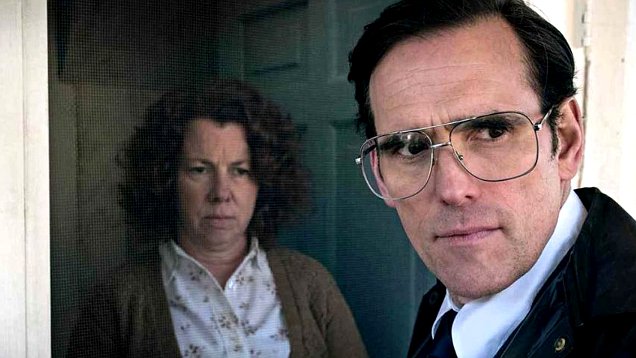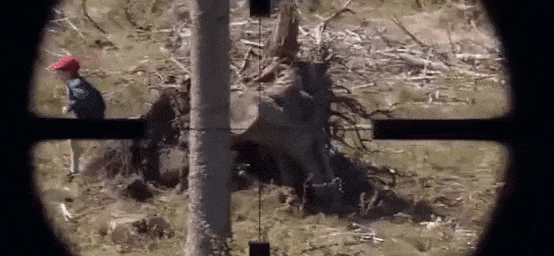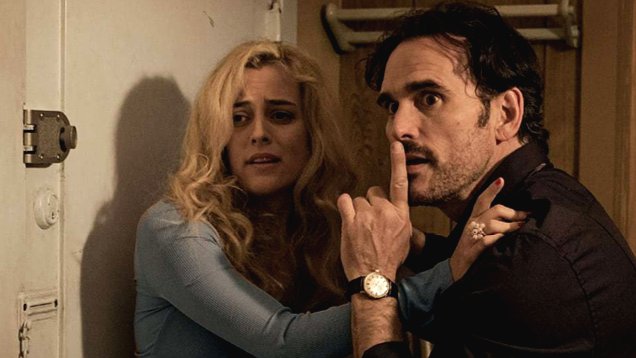The blunt and brutal The House That Jack Built is Lars von Trier at his best and worst

Notorious provocateur Lars von Trier is up to his old tricks with the savage but fascinatingly ambitious serial killer drama The House That Jack Built. Critic Sarah Ward attended the film’s Australian premiere at the Brisbane International Film Festival.
It has taken four decades as a filmmaker, numerous controversies, and a seven-year ban from the world’s most prestigious film festival. That, and making a feature that again caused mass walkouts when he was allowed back at Cannes. After all of the above, Lars von Trier has finally laid bare his psyche on the big screen in the bluntest and most brutal of terms. It’s compelling viewing, gore and all, but it also says exactly what you think it will.
Or, more than just diving into his own mind, von Trier exposes the deeds that stem from it — and, in the process, the conflict that comes with creation, especially when your idea of art, beauty and importance varies vastly from the bulk of the world. The House That Jack Built is a confession, a conversation with himself and an examination of his own recurrent fascinations. It’s also a two-and-a-half-hour serial killer film that splatters blood, death, literally broken heads and spliced body parts around as if the Danish director is painting with them.

As his most graphic scenes always demonstrate, von Trier likes to get his frames dirty. The more visually, viscerally and emotionally confronting his imagery the better. That’s firmly the case here, but while The House That Jack Built proves von Trier’s attempt to both indulge his proclivities and wrestle with the reasoning behind them, it also falls prey to his worst impulses. Regardless of the film’s gruesome displays, positing that men can typically get away with anything they like – even if it causes a stir, up to and including murder – means little when the exploited women in his gaze are a catalogue of misogynist simplifications.
Relaying “five randomly chosen incidents over a 12-year period” from a 60-plus killing spree to the unseen Verge (Bruno Ganz), Jack is von Trier’s screen surrogate. The memorable Matt Dillon plays Jack as driven, dedicated and diagnosed as obsessive compulsive – and as someone who’s designed to disarm with a usually calm but always slightly off-putting demeanour. It’s a knowing, mocking, amused self-portrait, or perhaps a realistic one. Jack’s the type of person who ingratiates his way into his victims’ lives only to gleefully, willingly wreak havoc.
First, Jack picks up a woman (Uma Thurman) with a busted tyre and a broken car jack. Hassling him into giving her a ride to the local mechanics, she jokes that he could be a serial killer. When he tires of her arrogance and nagging – telling him who he is while demanding his help – Jack responds with force, using the jack as his weapon of choice.
Von Trier does the same, wielding Jack as an instrument across each incident. Each Rube Goldberg-like slaying has a different flavour, but mimics a broadly similar pattern. Jack adapts to and reacts against his victim’s traits, flirts with giving them what they want and then unleashes his inner demons, eradicating his own OCD-fixation on cleanliness with each addition to his body count. He protests to Verge that he’s making art, though his art has a formula.

Jack knocks on a widow’s (Siobhan Fallon Hogan) door first claiming to be a cop, then an insurance salesman who can double her pension. He takes a mother (Sofie Grabol) and her young sons hunting, initially playing the doting husband and father figure they clearly want. Lumping on a crutch, he cosies up to another Jack in Jacqueline (Riley Keogh). She wants affection and is willing to reciprocate, but Jack tauntingly calls her by her last name, Simple.
Violence always follows. A caved-in face. A bullet to the head. A severed limb. Marked lines for an unwanted incision. After each sadistic act, Jack – or Mr. Sophistication, as he nicknames himself – stacks the bodies in a walk-in freezer, then poses them, then realises that he’s building something.
It’s easy to see von Trier’s career in the same way, trading in shocks, stringing them together, and unleashing the kind of cumulative force that’s evident when Breaking the Waves, Dancer in the Dark, Antichrist, Melancholia and Nymphomaniac all combine. Underscoring the point, in one of the chats with Verge that punctuate Jack’s homicides – touching upon topics such as architecture, concentration camps, dessert wine, Glenn Gould’s piano prowess, art placed to be seen by god only and violence splashed across pop culture to be seen by everyone – von Trier weaves snippets of his own features.
Fascinatingly ambitious, the results are shot and edited with provocative precision by someone who knows how to make every frame stand out. The House That Jack Built is styled for both art and discomfort, demanding that the audience keep watching even as their patience and stomach are tested.
But ultimately, just as Verge tells Jack that he’s heard it all before, viewers will echo the sentiment. As darkly compelling as individual moments prove, we’ve seen von Trier try to startle and achieve the feat. We’ve seen him process his own inner chaos in difficult narratives with just as difficult imagery. And, we’ve seen his characters recount slices of their lives in episodic chunks that also double as statements on von Trier’s ethos – in his last most recent work, Nymphomaniac Volume 1 and Volume 2.
What we haven’t seen before is a piece as blatant as this, which is quite the coup given von Trier’s oeuvre. In the style of Bob Dylan’s “Subterranean Homesick Blues” music video, Jack holds up cards that list undesirable traits. Blaring intermittently are bursts of David Bowie’s “Fame”. In casting Ganz as Jack’s confessor, von Trier inverts the actor’s most famous role, transforming him from an angel who gives up heaven for love in Wings of Desire to a real-life figure who lingers with Jack in the depths of hell.
None of these are subtle touches. Nor is the film’s carnage, how it paints its women, its posturing lines of dialogue or Dillon’s unhinged grin. Nuance has never been von Trier’s forte, yet at his powerful and poignant best, such as Melancholia, he’s always been capable of making viewers dive deep into his stories, characters, traumas and violence. Here, he overtly carves himself up, and both demands and receives attention, but his cuts remain skin deep.
He’s happily living in within his own creation, and cares not if infamy follows. If anyone doesn’t like it, his last music cue says it all. “Hit the Road, Jack” plays over the film’s closing credits, and inspires the same thought as everything that precedes it: “of course”.

















